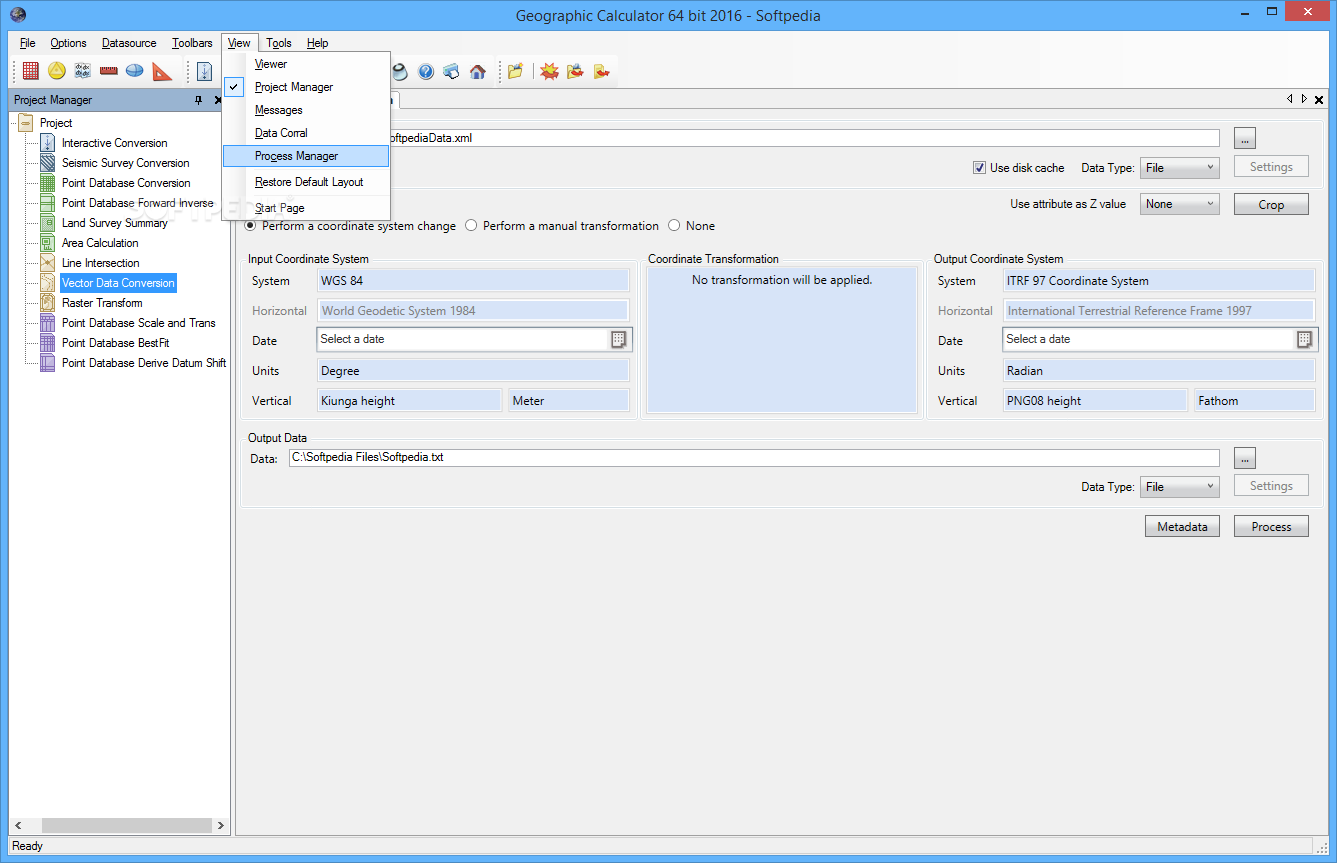고정 헤더 영역
상세 컨텐츠
본문
The year 2018 marks a significant milestone in the Blue Marble Story. A quarter of a century ago, a group of enterprising geospatial technologists, recognizing the importance of geodetic accuracy and precision in a wide variety of fields, initiated a project that would result in the first version of Geographic Calculator. Little did they anticipate that 25 years later – a veritable eternity in the world of technology — the application would still be going strong and would have established itself as the go-to coordinate management tool for countless companies throughout the world.The basic premise behind Geographic Calculator is to ensure the maximum possible degree of accuracy in any type of spatially referenced data when it is assigned to a different frame of reference.
The Geographic Calculator 6.3 With Crack

In short, it is a geodetic toolkit. Built on the foundation of the world’s most extensive and up-to-date database of coordinate system and transformation parameters, the Calculator, as it is often idiomatically referred, has been adopted by many major companies and government departments. It is deployed both as a standalone application and increasingly as an embedded component in third party applications through its SDK variant, GeoCalc.Needless to say, an application that has been in existence for 25 years has undergone significant changes since its early versions. To help put this in perspective, we asked Sam Knight, Director of Product Management and universally recognized Calculator guru, to take a trip down memory lane and come up with the five most significant differences between the first release of the Calculator and today’s version.

Vector and Raster Data Conversions. Blue Marble Geographics Raster processing in Geographic Calculator 2017The first several releases of Geographic Calculator dealt exclusively with numeric data, lists of coordinate values if you will. If you needed to apply a conversion to raster or vector files, you would have to wait few years for that to be available. When it was finally introduced, the raster processing component was actually a completely separate application called Geographic Transformer. Eventually it was integrated into a complete suite of tools under the title, Blue Marble Desktop.
The name of this suite of tools would eventually come full circle and once again be branded Geographic Calculator. Coordinate Transformations (Datum Shifts). Blue Marble Geographics The late-binding transformation dialog box in Geographic Calculator 2017The complicated, multi-parameter computation that is needed to assign data to a differed horizontal datum, usually referred to as a datum shift, was a much more basic process in the first release. Referred to as early-binding, the transformation parameters were predefined within the Datasource. When you selected a datum, it came with transformation parameters to WGS 84.
With the introduction of late-binding in 2006, it became possible to select a single or multi-step transformation method with any datum as the intermediary, not just WGS 84. This opened the possibility of more accurately transforming between regional or specialized systems. Batch Processing. Blue Marble Geographics Batch processing in Geographic Calculator 2017After the initial release of the Calculator, it quickly became apparent that users were interested in processing multiple files simultaneously using the same conversion settings. Unfortunately, batch processing, such as is seen in today’s release, was not available.
Files had to be managed individually. Today’s batch processing tool is easy to set up and saves much time and effort. Simply define the specific parameters for a certain type of job and use this job as the basis of the batch process. Ability to Save Work on Projects.
Blue Marble Geographics Calculator project in Geographic Calculator 2017In any application, efficient file and project management is essential, but unfortunately, the development of the early versions of the Geographic Calculator focused more on the fundamental geodetic processing capabilities, while relegating workflow efficiency to a lower priority. The current method for saving projects, which allows users to establish templates containing commonly used conversion and transformation jobs, was finally introduced in 2006. EPSG Database. Blue Marble Geographics EPSG datasource in Geographic Calculator 2017At the heart of the Calculator is the extensive Datasource, a vast library of coordinate system and datum parameters. In the early releases, this was largely derived from a publication that was managed by the U.S. Defense Mapping Agency (DMA), which would later become the National Geospatial-Intelligence Agency (NGA). This offered no more than a few hundred coordinate systems.

Geographic Calculator Price
The emergence of the European Petroleum Survey Group (EPSG, now known as IOGP) Geodetic Parameter Registry was the basis for a significant expansion of the Datasource which now provides users with over 5,000 coordinate system definitions, over 2,000 datum transformations, and much more. Ensuring Geodetic Accuracy for 25 YearsHaving been in development for 25 years, it is little wonder that Geographic Calculator has established itself as the preeminent geodetic software. While much has changed since the first release, its fundamental function is the same: to ensure geodetic accuracy and precision.




